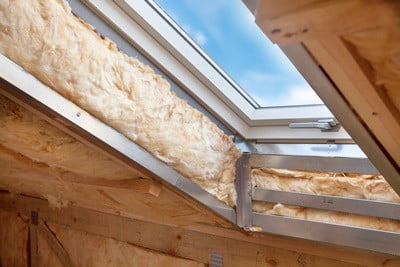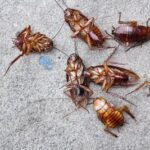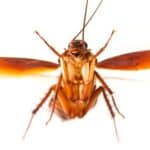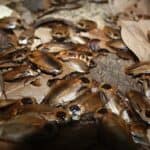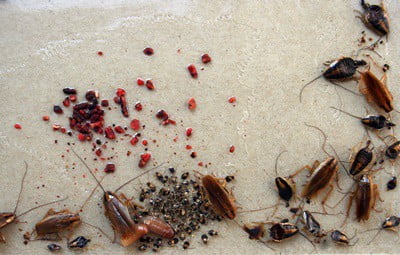Cockroaches can choose seemingly strange locations to hide. Discovering that you have roaches in your attic and not your kitchen can be puzzling. However, the attic is a place where roaches can avoid detection by humans.
Roaches enter the attic through small cracks or poor weatherstripping in the roof. Any rotting wood or old insulation will make the attic an appealing hiding spot, and food source, for cockroaches. Roaches reside in dark, damp spaces, so the attic is a desirable breeding ground where female cockroaches can lay eggs.
To get rid of cockroaches in the attic, you need to look at nest detection, chemical control, sanitation, and prevention. Eggs, nymphs, and adults will hide (or be hidden) in different places and pose different challenges.
Can Cockroaches Live In The Attic?
Cockroaches can live in your attic and gain entry by crawling through:
- Poor weather stripping
- Gaps in caulking along your rooftop
- Cracks in your roofing or along your drywall
Once inside, roaches will dwell in the dark, moist areas of your attic. According to Texas A&M University, roaches thrive in climates with high humidity. A leaky roof coupled with heat trapped by your attic’s insulation makes the perfect place for roaches to live and multiply.
Roaches in Attic Insulation
Insulation is useful for keeping warm air in your house during the winter. With that said, older attic insulation might invite pests in. That’s because it’s:
- Sealed behind walls or tucked up against the ceiling.
- Warm and offers a balanced temperature in most weather conditions.
- Food for roaches. Despite being chemical-based, many types of insulation also have organic material in their fibers.
It’s wise to replace your insulation every 15 years to prevent this problem. Attic-dwelling cockroaches will feast on the insulation along with any:
- Unsealed soft paper
- Cardboard
- Linen
Roaches are opportunistic and will eat pretty much anything organic. If they run out of food in the attic, they may use it as a base camp. From here, they’ll sneak out and raid your home for other food.
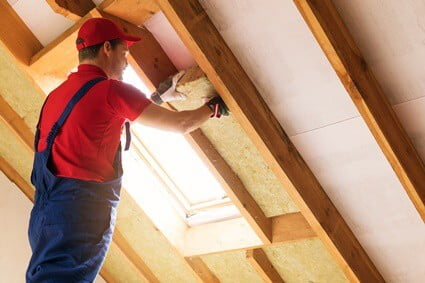
Do Roaches Like Attics?
Roaches don’t like attics in and of themselves. If given a chance, roaches prefer to nest near ample food, such as your kitchen. However, if needed, you’ll find a roach colony in your attic. These factors will attract them:
Attics Are Dark
Roaches are nocturnal insects, so they feel more energized during the night. Since most attics are dark or poorly lit, roaches will enjoy how these conditions replicate constant nighttime. Cockroaches may scuttle across your floor during the day as well. However, this is a clear sign that you have a serious infestation.
Attics See Little Activity
It’s easier for cockroaches to operate under cover of darkness. Predators and humans who wish to harm them are less likely to be awake at this time. As such, roaches can move about unimpeded and unafraid. Couple this with the fact that most humans rarely go in their attics.
Attics Are Quiet
Sounds from around the home won’t easily reach an attic. This creates a quiet getaway for a roach colony to nest. They won’t be startled by pets, humans, or jarring music, which would all indicate predators.
How To Tell If There Are Roaches In Your Attic
Keep in mind that seeing a single cockroach does not always mean your home is infested. It could be that the one cockroach wandered into your home, but this is unlikely. Your attic is infested if you see:
- Shed exoskeletons
- Egg cases
- Nymphs
These should all be spotted multiple occasions and in succession. Alongside that, you should look out for:
- Cockroach droppings
- Unexplained brown skid marks on your floors or walls
- Odd signs of damage to food, leather goods, books, or other paper materials
- Musty odor
Each of these can indicate that your attic needs extermination measures.
How To Get Rid Of Cockroaches In The Attic
When getting roaches out of the attic, you may need a combination of treatment methods. Most are easy to implement, even in your attic. According to Colorado State University, the ways to manage an infestation are:
- Prevention and sanitation
- Detection
- Chemical control
Prevention And Sanitation
Before you can start finding the places that roaches hide, you need to cast a wider net. Use these steps to isolate the roaches and keep out new ones.
Block Escape
Before you start spraying chemicals, block off all methods of escape. This can include:
- Cracks in the roof
- Gaps in the wall
- Small holes in the floor
- Openings around windows or vents
Trapping them in that single location will minimize damage. They can’t eat at your roof or spread into your walls. Likewise, it’ll prevent them from spreading into other areas of your home. Here are some steps you can take:
- Install weather stripping or replace older weather stripping
- Caulk any cracks or plumbing that could lead to other areas of your home
- Light up any dark places around your attic
Light Up The Space
According to the University of Zürich, most cockroach species become sluggish (and thus easier to catch and kill) in well-lit areas. When forced to spend extended periods of time in bright light, cockroaches reduced their movements significantly. Lighting up your attic will make it easier to both see the infestation and eliminate it.
Clean Infested Objects
Roaches may be nesting or laying eggs in your stored items. Be sure to clear out any boxes, clothing, or furniture in your attic. If you need to continue using the place for storage, throw out any molded or old cardboard boxes. You can replace them with airtight plastic containers or bags. Roaches find these items difficult to chew through.
Once you’re finished, clean yourself because roach eggs can stick to clothing. Simply putting your clothes into a laundry basket to wash later on is a bad idea. This may invite these pests into other parts of your home.
Ventilate Your Attic
It turns out that roaches don’t like strong breezes. The Journal of Economic Entomology found that American and smoky-brown cockroaches are repelled by air velocities upwards of 4.0 meters per second.
Fortunately, most standard HVAC systems installed in modern homes produce air velocities well above this range. As such, you should try to keep your attic well-ventilated. This can discourage roaches from staying there and prevent new ones from taking up residence.
Detection
Now that the area is prepared, you can start targeting the roaches. The best pest control is applied directly to their hiding spots. But where are they? Cockroaches tend to concentrate in certain areas. Be sure to set any traps or other pesticides within your attic in:
- Damp areas under or near plumbing or leaky pipes
- Cabinets
- Dark corners
Do not assume the infestation is completely gone if you no longer trap cockroaches in these areas. This may mean that you need to rotate the traps around different parts of your attic. You will know the infestation is completely gone when your traps no longer turn up any roaches.
Of course, traps alone will not rid your attic of roaches. You should be using traps alongside other types of pesticides.
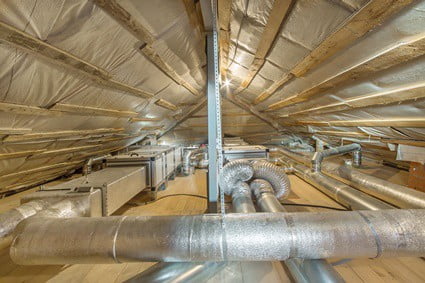
Chemical Control
Use an insecticide to kill and otherwise rid your attic of these pests. Insecticides tend to come in four forms:
- Residual sprays
- Non-residual sprays
- Dusts
- Baits
Residual Sprays
Residual sprays are insecticides that will leave a toxic residue on surfaces they’re sprayed on. This residue will only last for a certain period of time. Reapply it within the time period set on the instructions. Of course, you should do this carefully. Aerosol insecticide can spread to your family’s bedrooms if you:
- Spray an exorbitant amount
- Fail to block off escape routes, allowing roaches to track it through your home
- Don’t keep the attic well ventilated
Follow the directions on the packaging. You should avoid spraying any given area too much, as these sprays are poisonous and should not be treated lightly. Likewise, these poisons may damage items in your attic, such as:
- Linoleum
- Carpets
- Drapes
- Paint
Only spray it on items you’re willing to have damaged, or that can take it.
Non-Residual Sprays
Non-residual sprays will only kill a cockroach on contact. They contain irritants that will lure cockroaches out of their hiding spots and make them easier to kill. Most non-residual sprays work best when used with residual sprays. The former will flush the roaches out onto the areas coated in the residual pesticides.
Keep in mind that some species have developed a hardy resistance to insecticides, including German cockroaches. Do not despair if you do have German roaches in your attic as you can pair this method with others to get results.
Dusts and Baits
Insecticide dusts are available in hardware stores. This pest control method is designed to kill roaches when sprays are ineffective. For example, you can dust boxes, furniture, or drapes. Dusts last longer than residual sprays and can also be spread from roach to roach through physical contact.
Baits should be used in areas that cannot be sprayed or dusted. Place tiny amounts of bait in various locations around your attic. This should easily snuff out most of the other roaches your traps failed to catch. If you find home treatments aren’t working, you may need to take a harsher approach.
You should see results in a few weeks. The population should thin out. If not, your DIY approach may not be killing off all of them. In this case, call a professional exterminator. With their assistance, your attic can become roach-free.
